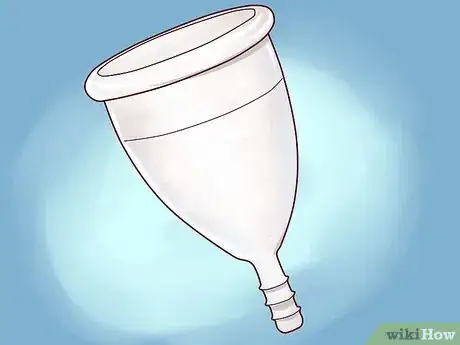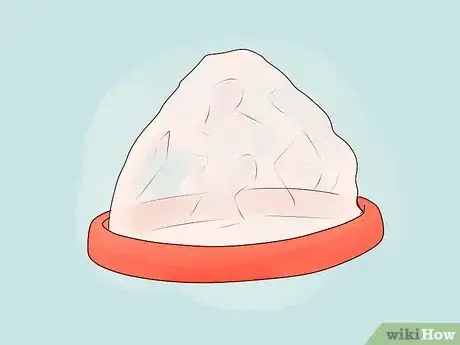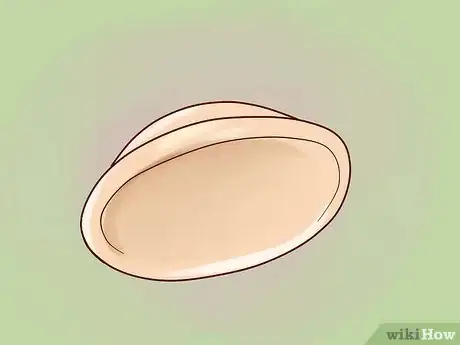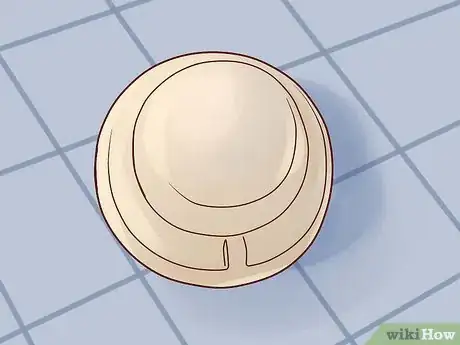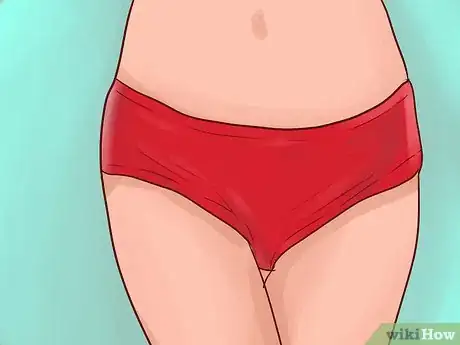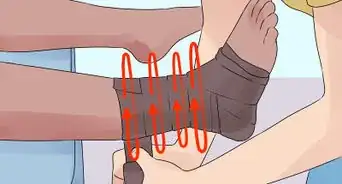This article was medically reviewed by Lacy Windham, MD. Lacy Windham, MD, is a Board-Certified Obstetrician & Gynecologist in Cleveland, Tennessee. Dr. Windham attended medical school at the University of Tennessee Health Science Center in Memphis. Her residency was completed at Eastern Virginia Medical School in Norfolk, Virginia. She was the recipient of multiple awards during her residency training, including Most Outstanding Resident in Maternal Fetal Medicine, Most Outstanding Resident in Oncology, Most Outstanding Resident Overall, and Special Award in Minimally Invasive Surgery.
There are 10 references cited in this article, which can be found at the bottom of the page.
This article has been viewed 802,737 times.
Swimming while on your period can help to ease cramps and provide a gentle and fun way to exercise. While most women use tampons to contain their menstrual flow while swimming, other women either dislike tampons or cannot use them. Fortunately, there are several options to try for women who would like to swim on their period without using a tampon.
Steps
Trying Other Hygiene Devices
-
1Try a reusable menstrual cup. Silicone or rubber menstrual cups are reusable, flexible, bell-shaped devices that collect your menstrual flow. The cup should not leak if inserted properly and is one of the best alternatives to a tampon if you want to go swimming. Insert the cup before swimming, and leave it in until you can change out of your swimsuit into your regular clothing and switch to another method of period protection.
Menstrual Cup FAQs
How do you remove the cup? Some women find menstrual cups difficult to insert and remove, but it gets easier with practice. Check out this helpful wikiHow page to learn the process of inserting and removing a reusable menstrual cup.
How often do you need to empty the cup? Only once every 10 hours.
How do you know which cup is right for you? Menstrual cups come in a variety of sizes, so you may have to experiment with several sizes before you find a cup that works for you. You can buy menstrual cups online or at a drug store.[1] If you have fibroids or a dropped uterus, it can be hard to find a cup that fits you.[2]
How often do menstrual cups need to be replaced? Only once a year! So, in the long run, you’ll make less trips to the store and spend less money on menstrual hygiene products.
Does the cup cause any kind of odor? Nope! It can actually help cause less odor during your period.[3]What if you have an IUD? If you have an IUD, talk to your gynecologist before using a menstrual cup. Inserting a menstrual cup could potentially dislodge your IUD and you want to make sure you take proper precautions.[4]
-
2Consider a disposable menstrual cup. While they can be expensive compared to tampons or reusable cups, disposable menstrual cups are flexible, easy to insert, and work well for protection while swimming. Just as you would with a reusable cup, insert the cup before swimming, and leave it in until you can change out of your swimsuit into your regular clothing and switch to another method of period protection.
- Like reusable cups, disposable cups can be messy to insert and remove and require a learning curve to master placing them correctly in the vagina.
- Check out this helpful wikiHow page to learn the process of inserting and removing a disposable menstrual cup.
Advertisement -
3Consider a sea sponge. If you avoid tampons because you are concerned about the chemicals used in their production, a natural sea sponge might be a good solution for you. Sea sponge tampons are harvested from the ocean and contain no chemicals, and they are also reusable.[5]
Sea Sponge FAQs
Are sea sponges safe to use? The USFDA (United States Food and Drug Administration) does not approve the use of sea sponges for menstrual purposes due their potential connection to toxic shock syndrome. You can read their findings and judge them for yourself, but use sponges at your own risk.[6]
How do sea sponges work? Tampons and sea sponges work the same way-- by absorbing your menstrual flow. The advantages of a sea sponge are that it is all-natural, very absorbent, and it conforms to the shape of your body.[7]
How do you insert a sponge? To use a sea sponge for menstrual protection, begin by washing it in a mild soap and rinsing well. Then, while it is still moist, squeeze out the excess water, and insert it in the vagina while squeezing it tightly between your fingers to compress its size.
How often should you clean your sponge? Sponges should be cleaned before your first use, daily, and before storing.
How do you clean a sponge? Soak your sponge for 5/10 minutes in a cup of warm water mixed with 2-3 drops of tea tree oil, 1 tsp (4.9 mL) of hydrogen peroxide, or 1 US tbsp (15 mL) of apple cider or white vinegar.
Do you have to buy a special menstrual sea sponge? Yes, because sea sponges sold for arts and crafts or other purposes can be treated with chemicals.
Considering Off-Label Uses of Other Products
-
1Ask your doctor about a diaphragm. A diaphragm is a dome-shaped rubber cup placed high in the vagina. It is a birth control device, designed to block sperm from entering the cervix.It is not meant as a menstrual device.[8]However, if you have alight flowyou can use it while swimming as an alternative to a tampon.
- A diaphragm can be left in the vagina for up to 24 hours. If you have sex, you must leave your diaphragm in for at least 6 hours following intercourse to prevent pregnancy. Diaphragms do not protect against STDs.
- Diaphragms can increase the risk of urinary tract infections. You should not use a diaphragm if you have a latex allergy. Cramping or pelvic pain can result from the wrong sized diaphragm, so be sure to replace your diaphragm in the event of weight loss or gain of 10 pounds or more.
- To wash your diaphragm, remove it and wash it with mild soap, then rinse and dry. Do not use products like baby powder or face powder, as these can damage the diaphragm.
- Once again, using a diaphragm for regular menstrual protection is not recommended. If you're having a light flow and want an alternative to a tampon to swim, you can try inserting a diaphragm. You may want to test it out beforehand, however, to see how well it blocks blood flow. If you have sex after swimming, be sure to leave the diaphragm in place for six hours before removing it.
-
2Try a cervical cap. Much like a diaphragm, a cervical cap is primarily used as a contraceptive device. However, it does block menstrual flow so you can try using it when swimming if you want an alternative to your tampon.
Cervical Cap FAQs
How does a cervical cap work? A cervical cap is a silicon cup that is inserted in the vagina. Similar to a diaphragm, its purpose is to prevent pregnancy by blocking sperm from entering the cervix.[9]
Are cervical caps safe to use? Generally, yes. However, if you're allergic to latex or spermicide or have a history of toxic shock syndrome, you should probably not use the cervical cap. It might also be a bad idea to use a cervical cap if you have poor vaginal muscle control, any kind of infections like UTIs or STDs, and have any cuts or tears in your vaginal tissues.[10]
How do you insert a cervical cap? Check out this helpful wikiHow article for more details on correctly inserting a cervical cap.
Can you use this every time you’re on your period? The cervical cap is not recommended for habitual use, but if you're towards the end of your period and you only intend to use it while swimming, it could be a good alternative to a tampon. Talk to your doctor before using your cervical cap during menstruation to see if it’s right for you.
How do you clean and store a cervical cap? Wash it out with soap and warm water, and let it air dry. Don’t use any kind of powder on it, as this can lead to infections. Keep your cervical cap in a dry place, away from extreme cold or heat.[11]
Where can you get a cervical cap? Your doctor can figure out which size if right for you and give you a prescription for a cervical cap.[12]
Changing Your Habits
-
1Refrain from full body swimming. If you're unable to find a tampon alternative that works for you, you can find a way to get involved in water activities without fully submerging.
-
Sunbathing, wading, relaxing under a beach umbrella, and letting your feet hang in the waterare all good options, and you can wear a menstrual pad while you do these things.
- Remember that menstruation is a completely normal part of your life, and while it can be embarrassing to tell your friends you are on your period and don't want to swim, you should feel confident that your friends will understand.
- If you're uncomfortable telling them that you're on your period, you can simply tell them that you aren't feeling well or don't feel like swimming.
-
-
2Wear waterproof underwear. Waterproof underwear can be a safe, comfortable alternative to your period when swimming or doing other activities.
- Waterproof underwear looks much like regular underwear or bikini bottoms but has a hidden, leak-proof lining that helps absorb menstrual blood.
- If you plan on swimming in waterproof underwear, know that they will not absorb a heavy or moderate flow.They will only work towards the end of your cycle or on months when you're having a light flow.
-
3Wait until your flow lightens. As it can be difficult to find tampon alternatives that are effective and easy to conceal under a bathing suit; if you have a heavy period you may have to simply wait until your flow lightens to swim.
-
Hormonal birth control pills, when used correctly, can result in a lighter period.Hormonal IUDs may also result in less bleeding during your menstrual cycle. If you're an avid swimmer and dislike tampons, you could look into these options to shorten your cycle overall.
- You might also consider Seasonale or other birth control pills that result in less frequent periods. Seasonale is designed so that you take "active" hormonal pills every day for three months before taking a week of "inactive" placebo pills, which activates your period. Although some women have light, breakthrough bleeding during their active pills, this method can help you predict when you will have your period so you can plan your swimming times around it.
- Try establishing a vigorous exercise routine. Regular, rigorous physical activities of any kind can reduce the length of your period and make it lighter. If you're an avid swimmer, you may find your cycle changes during warmer months when you swim frequently. However, if your period becomes abnormally light or stops altogether talk to your doctor to rule out underlying medical concerns or pregnancy.[13]
-
Warnings
- Remember, being in water does not stop your period. The pressure may make the flow lighter for some women, but swimming will not cause your period to stop. If you choose to swim without any protection at all, be aware that your flow is likely to start up again as soon as you leave the water.⧼thumbs_response⧽
- Do not use a disposable or cloth pad in water. The water will saturate the pad, preventing it from catching your flow.⧼thumbs_response⧽
- Talk to your gynecologist before using a cervical cap or a diaphragm while menstruating to make sure it is safe for you.⧼thumbs_response⧽
References
- ↑ http://health.clevelandclinic.org/2015/02/tired-of-tampons-here-are-pros-and-cons-of-menstrual-cups/
- ↑ http://health.clevelandclinic.org/2015/02/tired-of-tampons-here-are-pros-and-cons-of-menstrual-cups/
- ↑ http://health.clevelandclinic.org/2015/02/tired-of-tampons-here-are-pros-and-cons-of-menstrual-cups/
- ↑ http://health.clevelandclinic.org/2015/02/tired-of-tampons-here-are-pros-and-cons-of-menstrual-cups/
- ↑ http://youngwomenshealth.org/2013/03/28/period-products/
- ↑ http://www.fda.gov/ICECI/ComplianceManuals/CompliancePolicyGuidanceManual/ucm123803.htm
- ↑ http://mashable.com/2015/07/19/menstrual-sponge-review/#ERk9ZYg1LPqz
- ↑ https://www.optionsforsexualhealth.org/birth-control-pregnancy/birth-control-options/barrier-methods/diaphragm
- ↑ http://plannedparenthood.org/learn/birth-control/cervical-cap
- ↑ http://plannedparenthood.org/learn/birth-control/cervical-cap
- ↑ https://www.plannedparenthood.org/learn/birth-control/cervical-cap/how-do-i-use-cervical-cap
- ↑ http://www.arhp.org/Publications-and-Resources/Patient-Resources/Fact-Sheets/Cervical-Cap
- ↑ http://www.betterhealth.vic.gov.au/bhcv2/bhcarticles.nsf/pages/Menstruation_athletic_amenorrhoea
- ↑ http://www.beinggirl.com/article/swimming-with-your-period/
About This Article
To swim on your period without a tampon, try inserting a menstrual cup and leaving it in until you’re finished swimming. You can get reusable silicone or rubber cups or disposable ones, which are a little easier to insert. Alternatively, consider a sea sponge, which will work in the same way as a tampon but without any unnatural chemicals. If you have a light flow, you can also wear waterproof underwear, which contains a hidden, leak-proof lining to help absorb menstrual blood. However, keep in mind that it will not absorb a moderate or heavy flow. For more tips from our Medical co-author, including how to use hormonal birth control pills to make your period lighter, read on!
